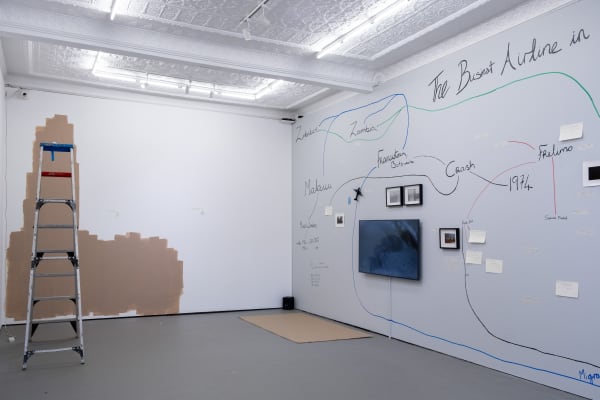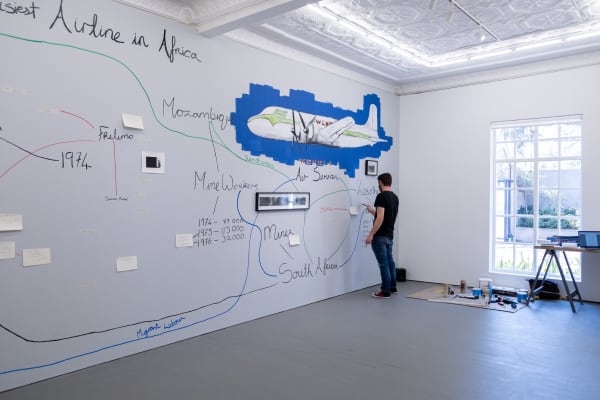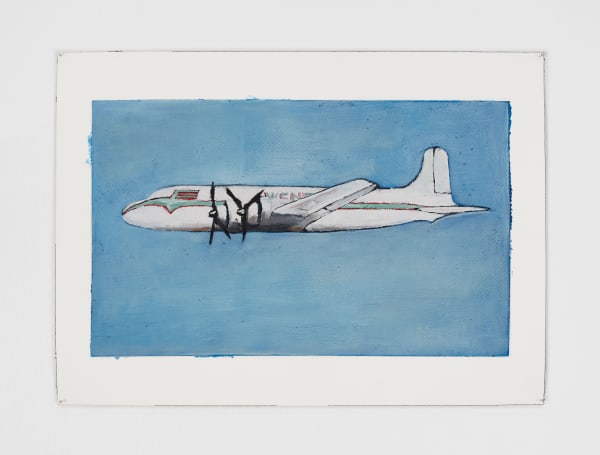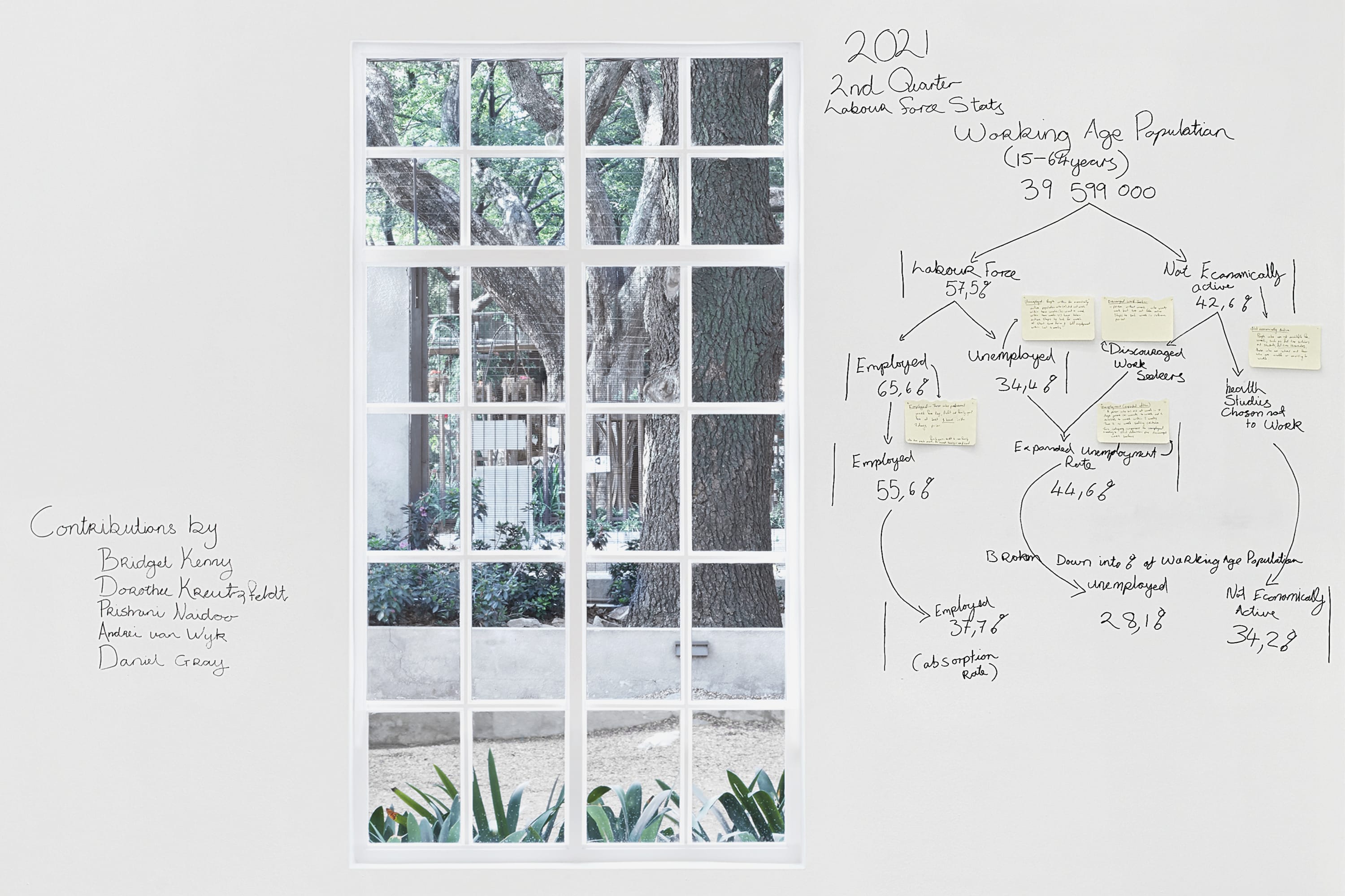-

-
Stevenson is pleased to present The Busiest Airline in Africa, a solo exhibition by Simon Gush.
In this project the artist continues his investigation into labour and the social implications of commerce through a durational body of work that is centred on the story of Wenela Air Services.
Wenela Air Services was formed in 1952 as an airline that operated cargo and passenger flights for the Witwatersrand Native Labour Association (WNLA), an organisation that provided labourers from Southern Africa to the South African mines. The carrier was conceived in 1944 by an administrative head of the Transvaal Chamber of Mines, about whom has been written that ‘he, more than anyone, shaped the industry's policies with regard to both white and black labour throughout the whole period from the 1920s to the 1950s’.
-

-
Based in Francistown, the carrier was reportedly, for a time, the busiest airline in Africa, travelling between Malawi, Zambia, Botswana, Zimbabwe, Namibia and Lesotho. On 4 April 1974, Wenela Air Services’ DC-4 aircraft crashed, killing 3 crew and 75 passengers despite a prescribed maximum occupancy of 50 people. The victims were Malawian employees of the South African Mining Company returning home; their bodies remain buried in Francistown. It has been estimated that the time taken from takeoff to the crash was six minutes. The cause of the crash has been attributed to contaminated fuel, caused by the negligence of Shell and BP.
-

-
-
Gush conceptualises The Busiest Airline in Africa as a show taking place in time rather than just space, unfolding through weekly programming and with points of analysis developed through interaction with invited guests and visitors. Mural paintings, photography and film are installed as an ongoing constellation, overlaid with text which foregrounds the intersectional factors around work. Making specific reference to Mexican muralism, the artist’s sketches and wall paintings centre the means of production as well as implements for personal care.
-
'Work is so pervasive that with each project or subject, I can use it as a lens to find another understanding. From the more personal narratives like family, love, intimacy and even leisure, to the overlapping but more overtly political stuff like land, colonialism and power, it is all infected by work. This pervasive quality of work means that, even when I try to tackle a subject directly, I find myself elsewhere – sometimes both conceptually and physically. When I started looking at migrant labour in Johannesburg, I first had to go to Lesotho and Mozambique rather than to the mines themselves. This eventually led me to Francistown and to thinking about airplanes, technology and economy.'
-

-
'In South Africa our understanding of work – all work – is conditioned by migrant labour; by the separation of work from home. Not only do we diminish the work of living and sustaining life, the work of the family that is left behind, families that in this case lost fathers or brothers, but we have naturalised the role of the economy of remittances and accepted the power that South Africa wields over its neighbours through these economics. With this story, I want to bring a spotlight to the effects of migrant labour by looking outwards from the body-breaking work of mining itself.'
-

-

-
Gush debuts a new film titled On the horizon of a blue house by the sea, created with Helena Chávez MacGregor. This is screened alongside SG, 59 Joubert Street, Johannesburg, made by the artist during the first wave of South Africa’s lockdown. Through both, the artist reflects on intimacy, isolation, work and uncertainty.
-
SG, 59 Joubert Street, Johannesburg, 2020
Digital video, sound
Duration 10min 30sec
Edition 3 + 1AP -

-
A discussion on labour and work with Dr Prishani Naidoo (Director of Society, Work & Politics Institute, Wits) and Professor Bridget Kenny (Sociology, Wits).
-
-
Prices exclude shipping and taxes
Simon Gush: The Busiest Airline in Africa
Previous viewing_room

































